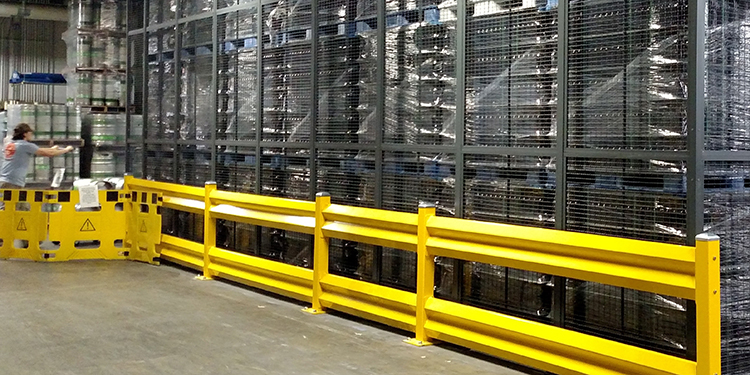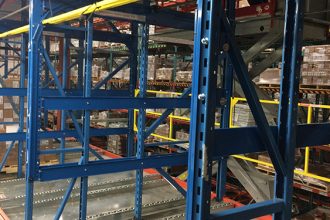How To Identify Areas Where Guardrails May Be Needed

Installing fixed protective barriers such as guardrails creates a physical separation between workers and potential impact hazards — such as vehicles, forklifts carrying loads, and mobile material handling equipment. Likewise, they can be installed to protect inventory, structures, equipment and other assets against impacts.
But how does an operations manager know which areas would benefit the most from a guardrail installation? Here are a few guidelines to assist when making that assessment.
- Look for areas with high personnel traffic. These are typically around entrance and exit doors, stairways, restrooms, and walkways. Any location within a facility where people are most likely to be or congregate — and should be segregated from vehicle or equipment traffic — is an optimal place to install a guardrail.
- Determine vulnerable structures. Often, modular buildings are placed on the floor of a facility to create office space for operations managers and other staff. These structures not only house people who would be injured by an impact, but they themselves would also be significantly damaged by a collision. Likewise, building columns supporting the roof and columns supporting mezzanines, elevated work platforms, or pick modules can also be more susceptible to significant damage from an impact and should be protected accordingly.
- Assess inventory storage locations. Major intersections or blind corners in aisles of industrial steel storage rack are also more likely to be impacted by a material handling vehicle taking too tight of a turn and bumping into the columns. Strategic deployment of guardrails can prevent accidental impacts and inventory damage.
- Note areas with significant elevation changes. If there’s a severe or significant drop of more than an inch or two, it should be protected by guardrail to prevent the vehicle from toppling over the side. This can include dock doors, which can be outfitted with removable or pivoting guardrails that allow trailer access when needed, and protection when no trailer is present.
- Identify dangerous or crucial equipment. Power generators, electrical service panels, large motors, forklift battery changing and charging areas, vehicle refueling areas, controls for automated systems, and other types of equipment that might create an unsafe (and potentially explosive) situation if struck should be protected by guardrails. For service access, these areas are also likely to be outfitted with removable or pivoting style protection.
- Select guardrail fit for purpose. Consideration should also be given to the guardrail selection to ensure the product is suitable for the application intended, or “fit for purpose.” If looking for traffic guardrail, identify a type or style that has a sufficient impact rating for the equipment on site, and confirm that the selected product’s published impact ratings have been verified independently.
For additional guidance and recommendations on where and what type/configuration of guardrail is optimal for an application, work with a qualified supplier of guardrail systems. A good place to start is with the members of the Protective Guarding Manufacturers Association (ProGMA).



